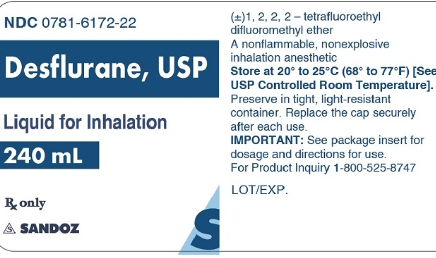
DESFLURANE (SHANGHAI HENGRUI) 100% Price
Active Substance: Desflurane.
Overview
Welcome to Dwaey, specifically on DESFLURANE (SHANGHAI HENGRUI) 100% page.
This medicine contains an important and useful components, as it consists of
Desfluraneis available in the market in concentration
Name
Desflurane
Precaution
Information not available
Indication
Information not available
Contra indication
Information not available
Side Effect
Information not available
Pregnancy Category ID
Information not available
Mode of Action
Information not available
Interaction
Information not available
Pregnancy Category Note
Information not available
Adult Dose
Information not available
Child Dose
Information not available
Renal Dose
Information not available
Administration
Information not available
